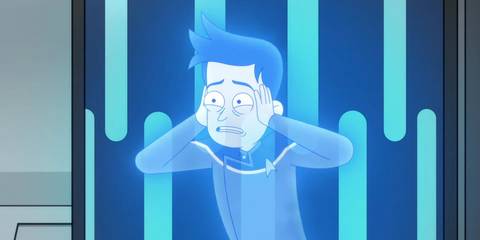Are Star Trek's futuristic wisdom fabrication creations truly safe to use?
Throughout the numerous times Star Trek has graced defenses, a lot of this time has been spent expanding the enormous macrocosm Gene Roddenberry first created over 50 times agone The ballot is filled with a vast array of alien races, and social- political atmospheres that are largely complex for a fictional macrocosm. At the heart of Star Trek still, like numerous wisdom fabrication programs, is an intricate and largely advanced array of technology, from underpinning drives to universal translators.
The technology is so great that it has managed to indeed impact the real world, with a unexpectedly large quantum of technological advancements taken from the show propelling ultramodern day humans into the future. The television shows and pictures present all these great widgets and jiggers with little sense of negative counteraccusations of their dragged use. still, this isn't the case with the medical condition named transporter psychosis.
The condition is named, aptly, after the main suspected cause the transporters. These awful bias were first created in a whirlwind fear from the pens of The Original Series. They were unfit to land the main Enterprise boat on each and every earth the crew visited due to budget conditions, and when they decided to use shuttles rather, the mount model wasn't ready. They had to come up with a last nanosecond volition, and so transporters were born. Because of this fairly rushed preface, the way in which they actually work has been a bit turbulent over the times, with varying explanations over multiple programs. The main principle, however, is that they break down a person to an infinitesimal position, also shoot their ‘ pattern ’ to the target position, and principally rebuild them there.
There have been colorful accidents over the times from what's understandably a largely complex and scary machine. There have been cases where a person is reproduced, where transporter victims havede-aged,( technically discovering eternity at the same time) as well as the memorable, yet rather terrible coupling of two living organisms. These, while distressing at the time, were frequently effects that could be resolved, similar as unyoking the combined organism( with large ethical consequences). But with transporter psychosis, there was no traceable cause or cure, making it one of the most intimidating aspects of this apparently perfect futuristic technology.
The detector for the condition was the breaking down of the body's neurochemicals during transport, but it wasn't inescapably caused by dragged use of the transporters. It sounded to affect people at arbitrary points, and although it had been passing since the medial 22nd century, there was no sanctioned medical opinion until 2209. It took a farther 100 times to produce a more complex pattern buffer, which sounded to phase out the issue. still, nothing was entirely clear as to why exactly it was passing, or what specifically caused it. While cases were being reported up until the new buffers were installed, that isn't to say it was common, thankfully only affecting a veritably bitsy chance of transported organisms. Still, there was enough substantiation of it passing that a fair many refused to use the transporter. numerous believe they're better safe than sorry when intruding with a largely complex technology that causes a surprising quantum of accidents over the times.
The symptoms of the psychosis included an array of paranoid visions, frequently taking the form of visions both tactile, and visual. They would also image the symptoms of madness, as well as psychogenic fever. The condition frequently affects the victims' capability to sleep, giving them an accelerated heart rate, reduced vision, dehumidification, and occasional painful spasms throughout the body. The results were nearly as bad as some of the worst conditions set up in Star Trek. The breakdown of neurochemicals greatly affected the body's autonomic systems, as well as motor functions and the advanced logic corridor of the brain. This wasn't a great combination of symptoms, and with no given cure, the stylish croakers could do was simply manage them.
The maturity of information about this affliction comes from the TNG occasion “ Realm of Fear ” which centered around the handwringer Lieutenant Reginald Barclay and his acute fear of transportation, who believed he was suffering from transporter psychosis. It turns out, still that he was just infected by microbes which produced analogous side goods. When looking at Barclay throughout the occasion, it’s veritably easy to get irked, as numerous of his crew mates do, with his alarmed geste and putatively illogical fear of a whole host of effects.
Transporters have been used ever since the golden days of The Original Series and have therefore come a chief of not just Star Trek, but a whole host of other space- faring wisdom fabrication shows and flicks, and so it might be easy for the followership to forget how absolutely frighting they are. They virtually dissolve an organism, and also assemble them on the other side — brain functions, recollections, and all. This is without the added fear of the plethora of problems that can go awry, and have done on multiple occasions, of which Transporter Psychosis is potentially the most scary. When looking at all of this, Barclay's geste makes sense. maybe further of the crew should consider bravely going, but with a bit more caution, where nothing has gone ahead.

Comments
Post a Comment